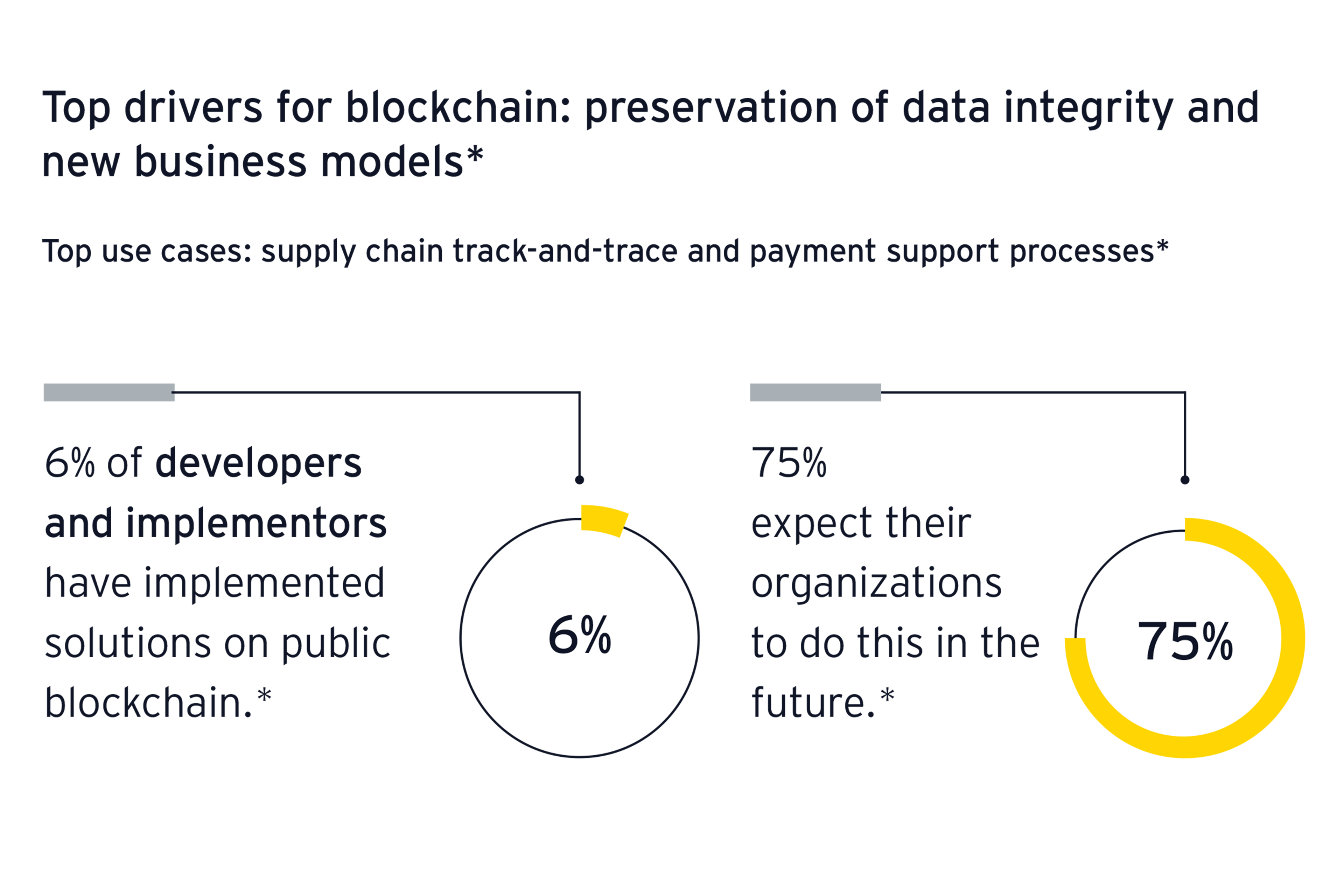The value of public blockchains
Blockchains, like most network technologies, are natural monopolies. The more users they have, the more useful they become, and once they achieve a position of dominance, they tend to start aggressively extracting “rents” from their members. Having seen this pattern in several consumer applications, at EY we believe most enterprises will prefer to stick to their legacy tools rather than let themselves experience a similar fate facing an all-powerful private blockchain monopolist in the B2B space.
Public blockchains like Ethereum offer a better choice for enterprise users. Even if they do achieve monopoly-like dominance, there is no controlling entity to extract excess profits — there is only an ecosystem of competing service providers.
Despite this advantage, there is an apparent lack of awareness around Ethereum’s benefits, and this must be overcome. In fact, a separate EY survey of blockchain developers, researchers and professionals during the Devcon 5 Ethereum conference found that 90% of the respondents do not believe the general public understands the purpose of Ethereum, despite nearly 60% of respondents being confident in the future of Ethereum themselves.
Strong projections
60%of respondents are confident in the future of Ethereum, though a majority question the public’s understanding of it.
The protocols that power the internet are good examples of how shared systems can be universally adopted and offer immense value creation without putting control in the hands of a single enterprise. Public blockchains offer the same kind of enduring value proposition.
Solving privacy and security concerns
Scalability aside, before enterprises embrace public blockchains, the problem of data security and privacy remains paramount.
Fortunately, privacy and security solutions on public blockchains are now maturing to a level where enterprises can make use of them with confidence.
The newest generation of public blockchain solutions, like those EY is building, allow companies to use public blockchains while maintaining complete data privacy. In fact, companies can transact with each other over public blockchains without ever having to put any sensitive enterprise or personal data on the blockchain at all. Instead, blockchains are used to pass status updates and mathematical proofs, but the sensitive data is always stored behind enterprise firewalls.

Let’s take for example a procurement contract between a buyer, seller and a finance company. The parties use the blockchain to identify each other, negotiate and agree upon a contract, but the contract itself is only stored in a readable format behind each enterprise firewall. What the parties leave on the blockchain for each other are only sets of mathematical proofs about when and how they have completed their obligations to each other.
The speed at which blockchain privacy technology is improving is dizzying. Since early 2018, we improved the efficiency of EY blockchain tools for privacy by a factor of 100. We are not alone in this pursuit: multiple organizations from companies to universities are pushing the envelope of a specialized form of math known as a zero-knowledge proof (ZKP) that is central to this technology. With nearly half (42%) of members of the Ethereum believing issues around scalability are the biggest barrier to Ethereum’s future success, the release of ZKPs brings newfound privacy and security to enterprises.

Enterprises are taking note of this progress. Perhaps the most telling result from Seize The Day: Public Blockchain Is On The Horizon (pdf)1 study was that while only 6% have implemented solutions on public blockchains, 75% of respondents expect their organizations to do so in the future.
When the cloud first became available, most enterprises were reluctant to embrace it. The efficiency of cloud comes from sharing infrastructure across companies, but where enterprises embraced cloud at all, the most popular early solutions were private, allowing for that limited shared infrastructure to stay within a single enterprise. As organizations and enterprises got comfortable with the security and reliability of sharing infrastructure, public cloud services came to dominate. A similar pattern is repeating itself in blockchain.
A version of this article was originally published in The Block .
Summary
As privacy and security solutions on public blockchains mature and increase to unprecedented levels, so too should the level of adoption. With all signs pointing to public blockchains for the long term, you can either build a private blockchain today, or you could just skip to the last chapter of the story and go straight to public. The decision seems clear.


